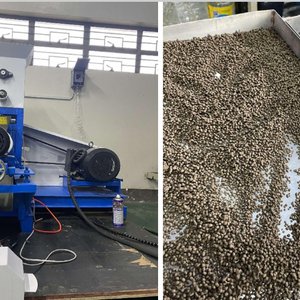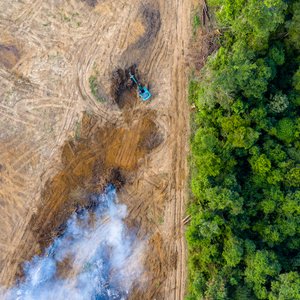NCI Aquaculture Feed Course featured alternative Northern-grown ingredients
The Alternative Ingredients in Finfish Aquaculture Short Course attracted participants from Guatemala, Panama, Costa Rica, and the tribal college in Ft. Totten, N.D., USA. The short course was October 18-22 at Northern Crops Institute (NCI), in cooperation with the USDA-ARS North Central Agricultural Research laboratory and the South Dakota State University, Brooking, S.D.
U.S. Grains Council (USGC) sponsored the short course. Minnesota Soybean Research and Promotion Council provided funding to develop the program. Minnesota Corn Utilization Council, North Dakota Corn Council, and North Dakota Soybean Council funded the tuition.
The program focused on using alternative ingredients, including DDGS and soy, in feed for warm-water and cold-water fin fish and shrimp. According to Jesse Trushenski, Ph.D., Southern Illinois University, aquaculture is expected to grow by 11% per year, significantly outpacing growth in other livestock areas.
Kurt Shultz, USGC Director, Latin America and Caribbean Region, says there is great potential for DDGS use in Central America, especially if the companies increase their inclusion rates as a result of attending the short course.
“Among the Central American companies that attended the seminar, the average DDGS inclusion rate is 8 percent for tilapia and non-existent for shrimp. This amounts to roughly 12,000 tons of DDGS or about $1.9 million used annually for aquaculture feed,” Shultz says.
"Central American feed millers currently produce approximately 300,000 tons of aquaculture feed annually. The region’s aquaculture feed use is split evenly between shrimp and tilapia, with Costa Rica and Honduras being the two biggest producers," says Shultz.
Kim Koch, Ph.D., NCI Feed Center manager, coordinated the course. “As research continues into the inclusion of DDGS in both tilapia and shrimp feeds, I can see the potential for an increase to perhaps 30,000 tons or more in Central America,” Koch said.
Participants attended the first two and a half days of lectures and hands-on laboratory experience at Northern Crops Institute. The group spent the remainder of the week at South Dakota State University, in addition to touring the Blue Dog Lake State Fish Hatchery in Waubay, S.D., SDSU Fish Research Laboratory, South Dakota Soybean Processors in Volga, S.D., Valero Renewables in Aurora, S.D., and then to MinAqua Fisheries in Renville, Minn.
Alejandro Gonzalez, consultant for USGC Costa Rica, accompanied the Central American team. Speakers for the course included: Mike Brown, Ph.D., South Dakota State University; Konrad Dabrowski, Ph.D., The Ohio State University; Donald Allen Davis, Ph.D., Auburn University; Nicholas Galt, NDSU; Peggy Piga, Ph.D., NDSU; Kurt Rosentrater, Ph.D., USDA-ARS North Central Agricultural Research Laboratory, Brookings, S.D.; and Jesse Trushenski, Ph.D., Southern Illinois University.
Northern Crops Institute supports regional agriculture and value-added processing by conducting educational and technical programs that expand and maintain domestic and international markets for northern-grown crops. NCI is funded by the states of Minnesota, North Dakota and South Dakota and commodity groups in those states and Montana.







